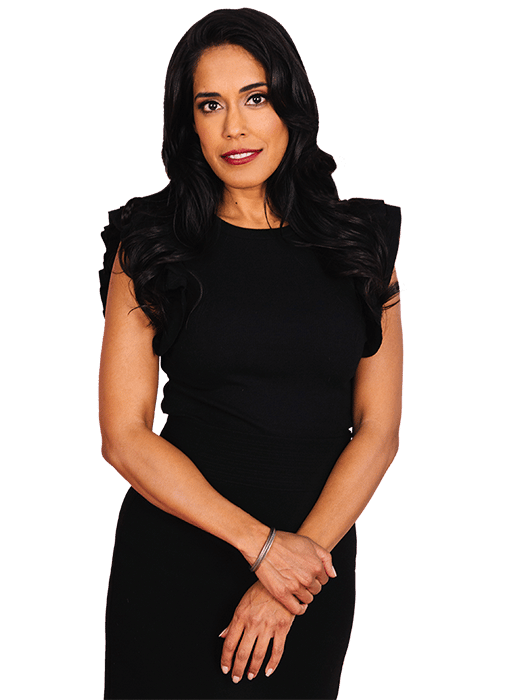
I’m sure you’ve heard a hundred times that communication is the secret to great relationships. But what if I told you there was a communication tool that could take your relationships from great to amazing?
In my book The Authenticity Principle, I explain the practice of “mindful listening” (which is like active listening but goes even deeper) and how it can make you a more effective and authentic leader. But mindful listening isn’t just for leaders. In any of our interactions with others — with family, lovers, friends, colleagues, bosses, customer service reps, you name it — mindful listening allows us to be more present, focused, and deliberate in our actions.
With mindful listening, you’re not only tuning in to your own needs and others’ needs — you’re also paying attention to everything that’s going on around you. This includes what the other person is saying, their body language, the energy they’re emitting, the feelings and body sensations you’re having, the thoughts in your head, and what’s happening in the environment around you. This requires a conscious shift from how most of us usually practice listening.
Ultimately, mindful listening helps us to form deeper, more authentic connections with people around us — improving our relationships overall and helping others to feel like they can be more authentic in our presence. Mindful listening will literally transform your relationships!
Different Types of Listening
Picture the following scenario: You’re out having dinner with a friend who seems to be repeating the same mistakes over and over again in her life. You feel like you’ve had the same conversation a million times before, and you’re frustrated. You’re thinking to yourself, “I can’t believe she’s doing this again. I would never do that. I would do XYZ instead. I’m going to tell her. But when will she stop talking?! Whatever. I’m going to interrupt her.”
This is an example of what I call “one-way listening” — anchoring to how we want to respond to the other person rather than taking in all of what they are communicating. It’s very self-focused, and it’s how most of us do our listening most of the time.
Another listening approach is what I call “two-way listening.” With this type of listening, you’re more focused on what the other person is saying. You’re paying attention to their words and body language, and you’re also tuned in to what you’re thinking and feeling.
In the above scenario with your friend, you’d say something to yourself like, “Hmm, she just said she agrees with me, but her body language makes me feel like she’s only saying it. I wonder if she’s saying it just to make me happy? It’s making me feel uncomfortable. Should I ask her what she really thinks? Maybe I shouldn’t. Or maybe I should? Hmm, I’m gonna leave it — we don’t have enough time to get into it.”
Some of us practice this type of listening some of the time. While it’s a better approach than one-way listening, it still doesn’t take in all of what the person is communicating, nor does it reflect how the environment around you could be impacting what’s being shared.
What Mindful Listening Looks Like
Mindful listening builds on how we usually listen (one-way or two-way listening) by using more of our senses and slowing down our thoughts to take in the situation in a more thoughtfully considered, non-judgmental way. With mindful listening, we fully absorb what’s taking place before deciding what to say or do.
In the scenario we’re considering, you would first reflect on what’s going on in the room. Is the restaurant crowded or noisy? Is the atmosphere uptight or relaxed? Is the waitstaff frequently nearby where they can overhear your conversation? How might these factors be impacting the way you and your friend are communicating?
You’d also consider how you’re feeling and how this is impacting your own communication. Are you at the end of a rough workday? Are you on edge from a fight you just had with your partner? Are you anticipating a difficult meeting the next morning? How are these feelings impacting your verbal and non-verbal communication?
Then, of course, you would fully consider how external and internal factors are impacting your friend and how she is communicating. You’d say to yourself something like this, “She seems to be off today — she’s speaking more quietly and slowly than usual and she’s hunched over in her chair. Hmm, I wonder if maybe she’s feeling really hurt by what’s going on in her life? In fact, now that I’m paying attention more, it seems that I’ve been speaking to her in kind of a preachy way when it comes to this issue, and not thinking about her emotions at all — probably because I’m stressed in my own life. It’s also really busy in here. Maybe when we’re in a more private place I’ll ask her about how she’s really feeling.”
Few of us take the time to practice this type of listening regularly, but doing so can have a profound effect on our interactions, how we connect with others, and how others connect with us.
How to Practice Mindful Listening
Here are a few strategies for listening mindfully:
- Pay attention to your breath.
Ensure that you’re engaging in diaphragm breathing (for a description of how to do this take a look at my post on mindfulness). This technique will help you to relax both mentally and physically and allow you to better hear your thoughts, feel the sensations in your body, and be more aware of the environment you’re in.
- Tune in to how you’re feeling in the moment.
What physical sensations are you feeling in your body and what do they mean? What thoughts are dancing in your head while the person is sharing? What’s happening in the environment that is impacting your experience? Is anything triggering you to perform? Do you feel forced to push down your Authentic Self out of fear?
- Tune in to the other person.
Listen to their words (what are they saying?), pay attention to their body language (what non-verbal signals are they giving you?), and take notice of whether there’s a disconnect between what they’re saying and how they’re emoting or what their body language is communicating. Could anything you’re doing be triggering them to perform?
- Take in the environment with your senses.
What’s happening in the room? Is anything happening that could be impacting how the person is sharing or how you’re receiving what the person is sharing? What might be happening that’s making it harder for you to be authentic or for the other person to be authentic?
- Take your time.
Give the person you’re with the time and space to articulate what they want to say. Then give yourself time and space to do the same. You will offer a more genuine, authentic response to what they are expressing if you listen in this manner.
Next time you’re in a meeting, out with a friend, or even having an argument, try this listening technique and observe how it changes your experience. The difference might surprise you!

I'm Ritu.
I’m an award-winning life coach, empowerment speaker, author, and inclusion expert dedicated to helping you live your best life.

Join MY COMMUNITY
Sign up for my mailing list to get free inspiration and tools straight to your inbox!
Top Posts
Related Posts

Dig deep into your journey to belong.
Be the first to learn about my authenticity and empowerment goodies and get them straight to your inbox.








